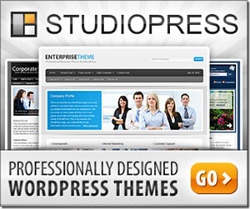 Well in simple language, EBook is an electronic book published on net by us either in word or pdf format. Writing it is an great experience like climbing up at Mount Everest. Hence today i am goanna share my views on writing it (top 15 tips) and get success in early time etc. Writing EBook is seriously simple, all what you need is just a few tips and you are all set to write, publish and earn from your EBook. The tips are well tested by great writers so you can completely rely on them. Have a look below.
Well in simple language, EBook is an electronic book published on net by us either in word or pdf format. Writing it is an great experience like climbing up at Mount Everest. Hence today i am goanna share my views on writing it (top 15 tips) and get success in early time etc. Writing EBook is seriously simple, all what you need is just a few tips and you are all set to write, publish and earn from your EBook. The tips are well tested by great writers so you can completely rely on them. Have a look below.
Top 15 strategies of writing an Successful EBook
1. Keep your writing punchy. Reading on a screen isn’t the same as reading a hard piece of paper, and it’s easier to get distracted by the ding of email (or TweetDeck for me). Writing in concise sentences packed full of goodness is a much easier way to keep someone rooted to the page, or get them back quickly if they stray.
2. Choose a larger font than you’d normally type with. Again, you’re reading on a screen. Try something in the 14 pt. range, and don’t choose a heavy or clever font. Stick to something readable, like Tahoma, Verdana, Georgia, or Baskerville. (I’m not a big fan of Arial, but hey if you like it…)
3. Make use of white space. You don’t have to fill every ounce of the page with words, and you’re better off if you don’t. Keep the words loose on the page with lots of room for your eyes to breathe between words and paragraphs.
4. Incorporate visuals. Graphics, pictures, and (simple) charts are a good way to enhance and emphasize the points you’re making in your piece. Don’t go overboard though; one or two carefully chosen ones are much better than a mess of irrelevant junk. For good choices in photos, look in Flickr’s Creative Commons section. Try eMarketer for charts and simple graphs on a variety of topics.
5. Break up your content. We’re back to the idea that we aren’t reading in hard copy, and catching someone’s eye is easier if you chunk your content into easy to digest pieces. Much like a blog post, it helps to have prominent headings and subheadings. Bullets are good. Blocks of rambling text, bad. This also makes it much easier for your readers to come back later and find their spot if they have to go away.
6. Mind your length. Per the all-knowing Twitter community, it seems that 20-30 pages is the ideal length, with a few outliers +/- a few pages. Over 50 seems to be begging for multiple pieces, or it better be super content rich. And it may differ based on whether or not your book is free; if your readers are paying for your content, they might be willing to take a bit more of their time to read.
7. Embed links. The cool thing about a PDF is that you can keep hyperlinks live and clickable. If you’re listing sites or resources, link to them in the text itself and save your readers a bit of research.
8. Use text bookmarks. This is a cool tip, and is a big help to readers who may wish to skip to specific sections in your book. Most word processing and presentation software allows you to bookmark pieces of text, which essentially is an anchor in the document you can return to later. You can then create a hyperlink within your document that jumps to that place, either from a table of contents or from within the text itself.
9. Don’t forget links to your site! At some point, your book is going to become detached from your site, passed around, etc. Use the document footer or other strategic locations to put the name of your website and a link back to the e-book. It doesn’t hurt to park your contact information in there somewhere, either.
10. Make it easy to share. This seems to go without saying, but it’s vital. Make sure you’re using something ubiquitous for your format, like a PDF. Microsoft Word, PowerPoint, or other Adobe formats don’t translate well, and not everyone uses them (or the same version for that matter). Also, be mindful of your file size; if it’s over 1MB or so, compress it (you can do this easily in Adobe Acrobat Reader under Document > Reduce File Size). That keeps it emailable and easily downloadable.
Some other Tips:
11. Choose Your Topic/Niche wisely- Choosing the topic is quite difficult. You should try writing an EBook about the topic in which you are an expert. For example if you are a blogger, write an EBook about Blogging, give it a title such as “How to Blog professionally”, “Blogging Tips – From a Pro” etc. Everyone love bloggers so you won’t find it difficult to sell your EBook.
You can also offer your ebook free of charge, guys from FirstSiteGuide wrote a great ebook for a newbie bloggers on how to start a blog and it’s absolutely free.
12. Valuate Correctly- Valuating the EBook is quite difficult so I suggest you to take help from the professionals in this very regards because if your EBook would be over or under priced then you might not get as much response as you should get.
13. Teamwork is Necessary- Team working is needed in every field, in writing an EBook too. All the people who have written EBooks haven’t written it all alone themselves, they have a team of around 3-4 or even more people. Team members are generally their own close friends.
14. Free or Paid- The most difficult option from which you have to choose from. It’s really difficult to choose whether your EBook will be free or paid. If you will make it available to the people for free then you will not earn enough, and if you will put a price-tag very high then you won’t get a lot of public response. So try keeping a balance between these two things.
15. Make a Strategy- Strategy is must. If you are actually aiming to write a super-successful evergreen EBook then you better devise your own strategy. You can ask your friends or professional in this regard because if you will launch your EBook without a strategy, you will land nowhere but in the centre of the jungle!
Also SEE- Book Torrents
That’s it! Enjoy…

As a professional book marketing provider I must say that, your insights on writing a successful eBook are both practical and encouraging! The emphasis on concise writing, using readable fonts, and incorporating visuals is crucial for engaging readers in a digital format. Tips like embedding links and using bookmarks enhance the user experience, while choosing a niche wisely and valuating the eBook correctly are essential for success. Balancing the decision between offering the eBook for free or at a price is challenging, but strategizing beforehand can make a significant difference. Overall, these tips make the writing process seem approachable and set the stage for potential success. Great job!